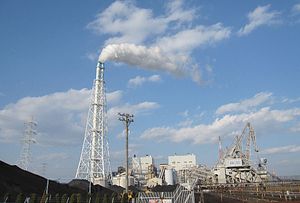When Suga Yoshihide won the Liberal Democratic Party (LDP) leadership race to become prime minister in mid-September he pledged to advance his predecessor Abe Shinzo’s “Abenomics” sustainable growth reforms to promote economic recovery and to contain the spread of COVID-19. Suga added that his administration would pursue a carbon free society, environmental measures, and a stable energy supply in a post-coronavirus era. But he failed to outline specific climate change countermeasures, leading to concerns that Suga has also inherited the previous Abe administration’s lackluster vision toward decarbonization and national energy reforms.
Global greenhouse gas emissions are expected to dip 4 percent to 7 percent in 2020. But emissions have a tendency to rise and return to normal after an economic downturn, which has brought attention to the need for more momentum and global coordination to reduce emissions alongside economic recovery efforts. The European Union has taken the lead by proposing a border carbon adjustment tax on imports from countries that lack tough environmental regulations. Meanwhile, Germany, France, and the U.K. have also pledged various carbon dioxide reduction and energy saving initiatives to create local jobs and jump-start economic growth.
At a time when advanced countries should be setting a decarbonization example to other countries, Japan, as the world’s fifth largest greenhouse gas emitter, has shown little initiative in boosting emissions reductions targets. In March the United Nations called on each country to raise national greenhouse emissions targets but Japan opted to keep its energy generation targets at 26 percent for coal power, 22 to 24 percent for renewable energy, and 20 to 22 percent for nuclear energy with an overall emissions reduction of 26 percent compared to fiscal 2013 levels by 2030.
Ministry of Economy, Trade, and Industry (METI) Minister Kajiyama Hiroshi has pushed the importance of coal as a long-term base energy supply for the nation. The government’s approach to decarbonization has centered around upgrading to high performance, state-of-the-art coal power plants, phasing out aged and outdated heavy C02 emitting power plants, and abandoning coal-fired power plant exports that emit high levels of C02. At a press conference on September 16, Kajiyama stressed, “We will promote decarbonization but cannot ignore the reality that we have no choice but to choose coal-fired power,” alluding to Japan’s dependency on energy imports.
In Japan the proportion of renewable energy generated rose in the first half of the year, mostly due to the decline in demand for overall energy. That has led to calls for the government to reassess the potential of renewable energy as well as setting higher renewable energy targets. According to the International Energy Agency (IEA), renewable energy made up 23.1 percent of Japan’s total energy generation compared to 18.6 percent in 2019. Japan is now close to the government’s 24 percent renewable energy target.
In Japan 90 percent of greenhouse gas emissions originate from the energy sector. Meaningful changes cannot take place without integrating economic and environmental policies. Under the previous Abe administration, the Ministry for Environment and METI clashed over coal power plant export policies. With energy policy under the jurisdiction of METI, environmental policy was confined by METI’s vested interests.
But inter-ministerial environmental conflict could be a thing of the past under the Suga administration. On his first day as prime minister, Suga said he was determined to tear down bureaucratic sectionalism to create a cabinet that works for the people, acknowledging past ministerial deadlock. Although METI Minister Kajiyama and Minister of the Environment Koizumi Shinjiro have retained their posts under the cabinet reshuffle, the balance of power once held by METI under the previous Abe administration appears to have weakened under Suga. That could pave the way for a transformation of Japan’s national energy policy.
The Paris Agreement aims to hold the global rise in temperatures to below 2 degrees Celsius, with an eye to maintain a temperature rise at 1.5 degrees Celsius. But based on the current trajectory, temperature rise at the end of this century is predicted to reach 3 degrees Celsius.
The next triennial review of the government’s basic energy policy will begin in the summer of 2021, allowing one year for the Suga administration to break from the Abe administration’s environmental lag and to contribute to the decarbonization of the world.
































